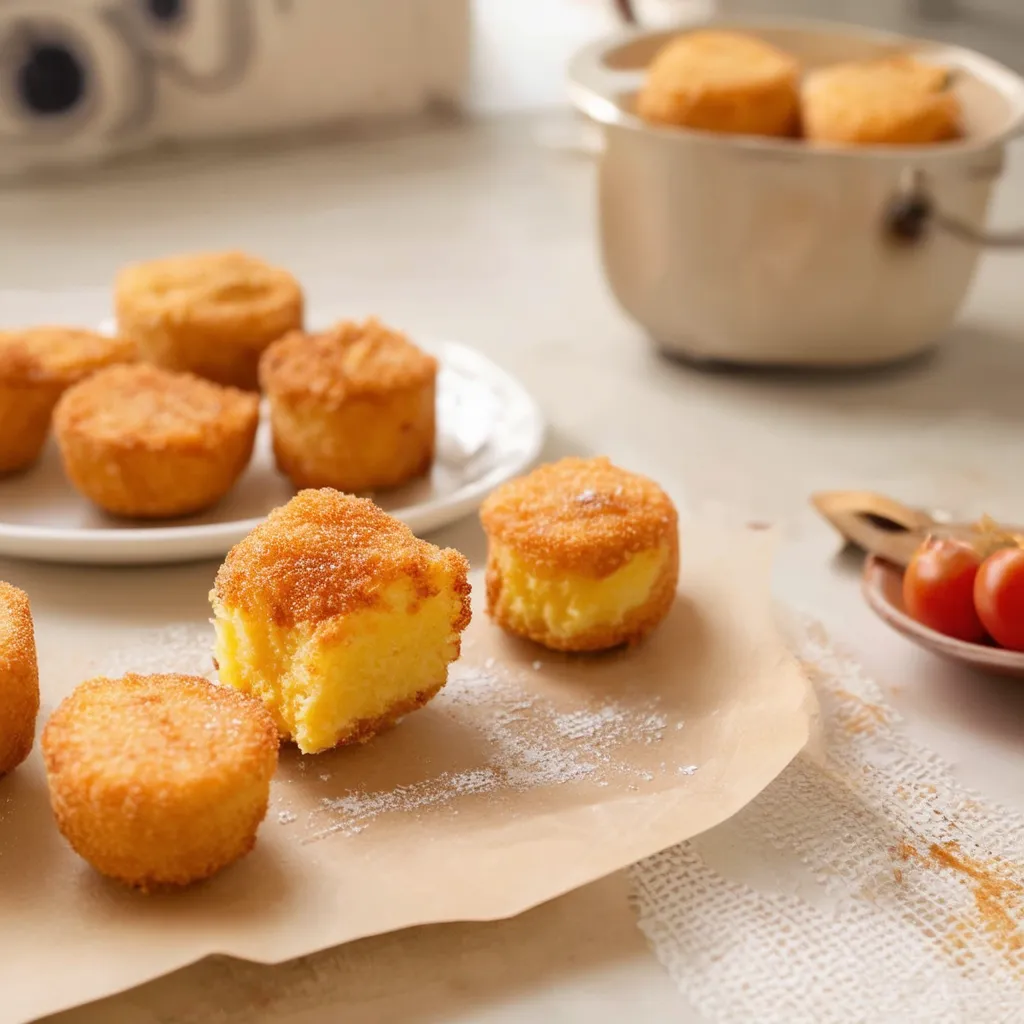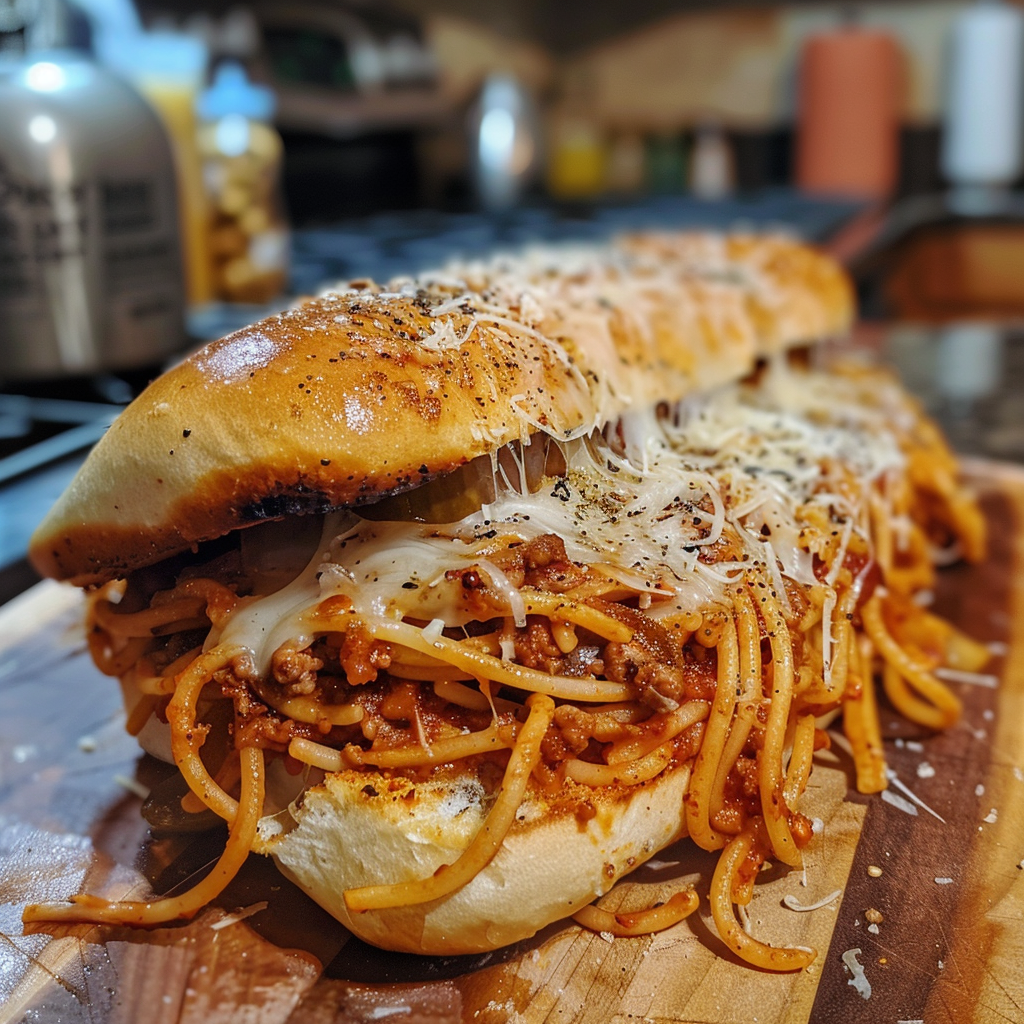Welcome to the delicious world of crispy fried cheesecake bites! This quick dessert recipe is perfect for anyone yearning for an indulgent treat. Picture this: a luscious, creamy cheesecake filling enveloped in a crispy exterior, making these easy cheesecake snacks a delightful experience for your taste buds. Whether you’re a novice in the kitchen or a seasoned chef, you’ll find this recipe straightforward and rewarding. Ideal for satisfying sweet cravings or impressing guests at your next gathering, these fried cheesecake delights are sure to become a favorite in your dessert repertoire!
Key Takeaways
- Crispy fried cheesecake bites combine creamy filling and crunchy texture.
- Quick and easy to prepare, suitable for all cooking skill levels.
- Perfect for parties, gatherings, or satisfying individual cravings.
- Versatile recipe can incorporate various flavors and toppings.
- Great for making dessert bites that are fun and shareable.
Introduction to Crispy Fried Cheesecake Bites
Fried desserts have captivated palates around the world for centuries. The introduction to fried desserts reveals a tradition filled with indulgence, showcasing how different cultures embrace the rich flavors and textures that frying brings. Among these beloved treats, cheesecake holds a special place in many hearts. Its origins can be traced back to ancient Greece, where it was first made from simple ingredients, embodying a creamy and luscious texture.
Today, we celebrate the fusion of these two culinary traditions with crispy fried cheesecake bites. But what are cheesecake bites? They are delightful, bite-sized pieces of classic cheesecake, encased in a crispy, golden-brown shell, offering the perfect balance of creamy and crunchy. This modern interpretation not only elevates the dessert experience but also makes it incredibly easy to prepare at home. The excitement of making these bites lies in their simplicity and the joy of sharing a treat that is both familiar and innovative.
Ingredients for Crispy Fried Cheesecake Bites
Understanding the right ingredients is essential for creating the perfect crispy fried cheesecake bites. The combination of quality ingredients not only helps achieve a delightful texture but also ensures a flavorful experience with every bite.
Essential Ingredients
To craft delicious cheesecake bites, gather the following cheesecake filling ingredients:
- Cream cheese
- Sugar
- Vanilla extract
- Egg roll wrappers
Cream cheese serves as the base for the filling, providing a rich and creamy center. The sugar sweetness balances the flavors well while vanilla extract adds a warm, aromatic touch. Using egg roll wrappers gives the bites their signature crispy exterior. The frying batter ingredients will further enhance the texture when cooked.
Optional Ingredient Additions
For those looking to enhance cheesecake bites flavors, consider incorporating some extra ingredients for cheesecake:
- Cinnamon for warmth
- Chocolate chips for richness
- Fruit preserves for a fruity twist
Each optional ingredient allows for customization, enabling creativity and personal flavor preferences. Feel free to experiment with different combinations to create a unique take on this delightful treat.
| Ingredient | Purpose |
|---|---|
| Cream Cheese | Main filling, provides creaminess |
| Sugar | Adds sweetness |
| Vanilla Extract | Enhances flavor with warmth |
| Egg Roll Wrappers | Creates crispy outer layer |
| Cinnamon | Adds warmth and spice |
| Chocolate Chips | Introduces extra richness |
| Fruit Preserves | Adds fruity flavor and texture |
Equipment Needed for Frying
Having the right equipment plays a vital role in ensuring the best results when making crispy fried cheesecake bites. An array of kitchen tools for frying can enhance both the cooking process and the final outcome. Here’s a look at essential frying tools and safety precautions to ensure a smooth cooking experience.
Frying Tools Overview
Choosing appropriate frying equipment can make all the difference in preparation. Essential items include:
- Deep Frying Pan or Pot: Ideal for maintaining a consistent oil temperature, this is crucial for achieving that perfect golden-brown exterior.
- Slotted Spoon: This tool is indispensable for retrieving your cheesecake bites from the hot oil while allowing excess grease to drain.
- Thermometer: Monitoring oil temperature is key to successful frying; a thermometer ensures accuracy, minimizing the risk of undercooked or burned bites.
- Paper Towels: These absorb excess oil from fried items, promoting a crispier texture and less greasy outcome.
Safety Precautions When Frying
Adhering to frying safety tips is essential for preventing accidents in the kitchen. Important measures include:
- Always monitor the oil temperature to prevent overheating, as this can cause fires.
- Keep a fire extinguisher nearby, ready for any potential emergencies.
- Wear protective gear, such as oven mitts and aprons, to safeguard against burns.
- Keep flammable materials away from the cooking area to further reduce risks.
By being equipped with the right frying tools and implementing essential safety measures, home cooks can enjoy a delightful experience while avoiding kitchen accidents.
Step-by-Step Instructions
Preparing crispy fried cheesecake bites is a delightful experience for anyone looking to satisfy their sweet tooth. Follow this detailed step-by-step frying guide to master how to make cheesecake bites.
- Prepare the Cheesecake Filling: In a mixing bowl, combine cream cheese, sugar, and vanilla extract. Blend until smooth and creamy.
- Assemble the Bites: Take an egg roll wrapper and place a spoonful of the prepared filling in the center. Fold the wrapper over the filling, tucking in the edges to seal securely.
- Heat the Oil: In a frying pan, heat oil over medium heat. Ensure the oil is hot enough for frying by dropping a small piece of bread into the oil; it should sizzle immediately.
- Fry the Cheesecake Bites: Carefully add the wrapped cheesecake bites to the hot oil, frying them in batches. Cook each side until they are golden brown, usually about 2-3 minutes per side.
- Drain Excess Oil: Once fried, place the bites on a paper towel-lined plate to absorb any excess oil.
- Cool and Serve: Allow the cheesecake bites to cool slightly before serving. They can be enjoyed plain or topped with a dusting of powdered sugar.
This clear and easy-to-follow process ensures perfect results, making it accessible even for those new to frying. Enjoy your homemade crispy fried cheesecake bites as a treat for yourself or to impress friends and family!
Tips for Perfectly Fried Cheesecake Bites
Achieving the perfect fried cheesecake texture requires attention to detail and a few key strategies. Following these tips for frying will help ensure your cheesecake bites turn out deliciously crispy on the outside while remaining creamy on the inside.
Achieving the Right Texture
To get the ideal crunch, start by ensuring that your oil temperature is correctly set. The recommended frying temperature is around 350°F (175°C). You can test if the oil is hot enough by dropping a small piece of dough into it. If it sizzles and rises to the surface quickly, you’re ready to fry.
It’s essential to manage the cooking time carefully. Frying the cheesecake bites for too long may lead to burnt exteriors, while not enough time can result in a soggy texture. A cooking duration of about 2-3 minutes on each side typically yields the best results.
Common Mistakes to Avoid
Understanding how to avoid bad cheesecake bites can significantly improve your frying experience. Here are some common frying mistakes to watch for:
- Over-filling the wrappers can lead to bursting during frying, causing the filling to escape.
- Using the wrong type of oil. Opt for oils with a high smoke point, like canola or peanut oil, for better frying performance.
- Frying at improper temperatures can result in uneven cooking. Always adjust your heat settings and use a thermometer for accuracy.
- Not allowing enough space in the fryer can lower the oil temperature and lead to greasy bites.
| Common Mistakes | Effects | Solutions |
|---|---|---|
| Over-filling Wrappers | Bursting and loss of filling | Fill gently and leave space at the top |
| Wrong Oil Type | Unpleasant flavors and smoke | Use high smoke point oils like canola |
| Incorrect Temperature | Uneven cooking and texture issues | Use a thermometer to monitor oil temperature |
| Overcrowding | Greasy bites and inconsistent cooking | Fry in small batches for optimal results |
Serving Suggestions for Cheesecake Bites
When it comes to serving cheesecake bites, creativity can make a significant difference in the overall experience. A well-presented dessert draws attention and elevates its appeal, especially at gatherings or parties. Consider implementing these engaging presentation tips for desserts to impress your guests.
Presentation Ideas
Here are some delightful ways to serve crispy fried cheesecake bites:
- Dusting with Powdered Sugar: A simple dust of powdered sugar adds a touch of elegance.
- Drizzling with Sauces: Chocolate or caramel sauce creates a delicious contrast and enhances flavor.
- Fruit Compote: Serve with a side of fresh fruit compote to introduce a fruity twist.
- Mini Dessert Plates: Use small plates for individual servings, accompanied by a small fork.
- Garnish with Mint: A sprig of fresh mint on top adds a burst of color and freshness.
Incorporating these ideas into your serving cheesecake bites will not only make them visually appealing but also create an inviting atmosphere for any occasion. Each element contributes to an unforgettable dessert presentation.
Storage and Reheating Tips
Enjoying crispy fried cheesecake bites is a delightful experience, and knowing how to store leftovers can elevate that enjoyment even further. Proper storage tips for cheesecake bites can ensure that these treats remain delicious for several days.
How to Store Leftovers
For the best results, follow these straightforward methods to keep your cheesecake bites fresh:
- Refrigeration: Place the cooled cheesecake bites in an airtight container. They can last up to 3 days in the fridge. Consider separating layers with parchment paper to prevent sticking.
- Freezing: If you need to store the bites for a longer period, freeze them. Arrange the cooled bites in a single layer on a baking sheet and freeze until solid. Transfer to a freezer-safe bag or container. They can last up to 2 months in the freezer.
When it comes to reheating fried desserts, ensure they retain their original crispy texture. The following tips will help:
- Reheat in the oven: Preheat the oven to 350°F. Place the cheesecake bites on a baking sheet and heat for about 10 minutes. This method keeps them crispy.
- Microwave cautiously: If you use a microwave, do so in short intervals. This method may soften the texture, so consider using it only if you’re in a hurry.
| Storage Method | Time | Texture After Reheating |
|---|---|---|
| Refrigeration | Up to 3 days | Somewhat soft, but still tasty |
| Freezing | Up to 2 months | Crispy if reheated in oven |
With these storage tips for cheesecake bites and proper reheating techniques, you can indulge in your delightful creations any day of the week!
Why You’ll Love This Quick & Easy Recipe
If you’re seeking the benefits of easy dessert recipes, look no further than Crispy Fried Cheesecake Bites. This delightful treat combines the rich, creamy essence of cheesecake with a crispy, golden exterior that will have your taste buds dancing. The beauty of this recipe lies not only in its deliciousness but also in its swift and simple preparation—perfect for busy individuals or last-minute gatherings.
There are many reasons why to try fried cheesecake, especially when you can whip them up in just a matter of minutes. Whether you’re hosting a party or simply want a satisfying sweet treat after dinner, these bites deliver both flavor and satisfaction. Plus, you have ample room for creativity, making it easy to cater to different palates by adding various toppings or flavorings to suit your preferences.
In short, this quick and easy recipe for Crispy Fried Cheesecake Bites is a game changer in the world of desserts. With minimal effort and a big payoff, you can impress family and friends while indulging in a delightful sweet treat that’s both crispy and creamy. So, gather your ingredients and get ready to enjoy a sophisticated yet approachable dessert that everyone will love!
FAQ
What are Crispy Fried Cheesecake Bites?
Crispy Fried Cheesecake Bites are bite-sized desserts made of a creamy cheesecake filling wrapped in a crispy exterior. They are a delightful treat perfect for any occasion, including parties or simple cravings.
How easy is it to make these easy cheesecake snacks?
Making Crispy Fried Cheesecake Bites is quite simple! The recipe is designed for both novice and experienced cooks, featuring straightforward steps that guide you through preparing and frying the dessert quickly.
What are the essential ingredients needed for the recipe?
The key ingredients for Crispy Fried Cheesecake Bites include cream cheese, sugar, vanilla extract, and egg roll wrappers. You can also add optional ingredients like cinnamon or chocolate chips to enhance the flavors.
What frying equipment do I need for this recipe?
Essential frying equipment includes a deep frying pan or pot, a slotted spoon for retrieving the bites, and paper towels for draining excess oil. Having these tools ready will ensure your frying experience goes smoothly.
Are there any safety precautions I should take when frying?
Yes! It’s important to monitor the oil temperature closely, keep a fire extinguisher handy, and wear protective gear like oven mitts to prevent burns or accidents while frying. Safety first!
What are some tips for achieving the right texture in my fried cheesecake bites?
To achieve the perfect texture, manage the oil temperature carefully, and test it before frying. This will help ensure your cheesecake bites are crispy on the outside while remaining creamy on the inside.
How do I properly store and reheat leftover cheesecake bites?
To store leftovers, refrigerate them in an airtight container for up to a few days or freeze them for longer storage. When reheating, it’s best to use an oven to maintain their crispiness.
What presentation ideas can I use when serving these dessert bites?
For an appealing presentation, dust the cheesecake bites with powdered sugar, drizzle with chocolate or caramel sauce, or serve with a side of fruit compote to elevate the dessert experience.
Why should I try this quick dessert recipe?
This recipe is ideal for those short on time but wanting a delicious treat. The versatility and simplicity of these fried cheesecake bites make them a must-try for anyone who loves easy dessert recipes!









